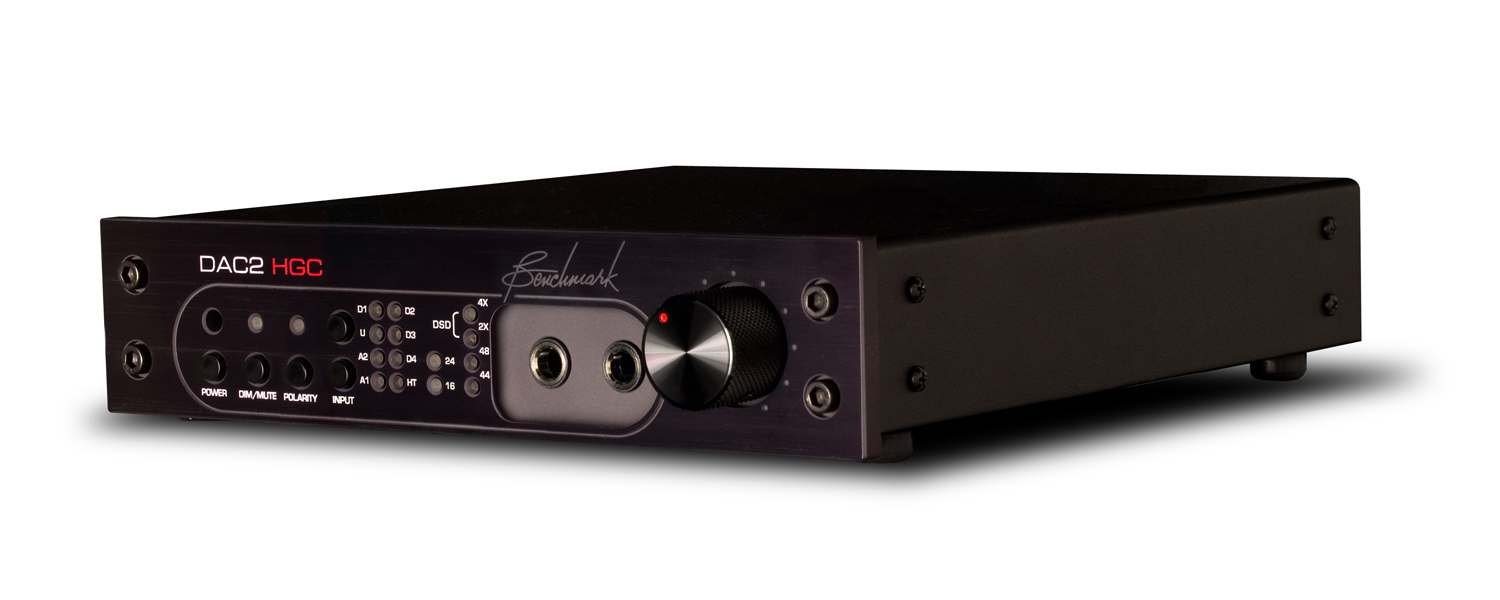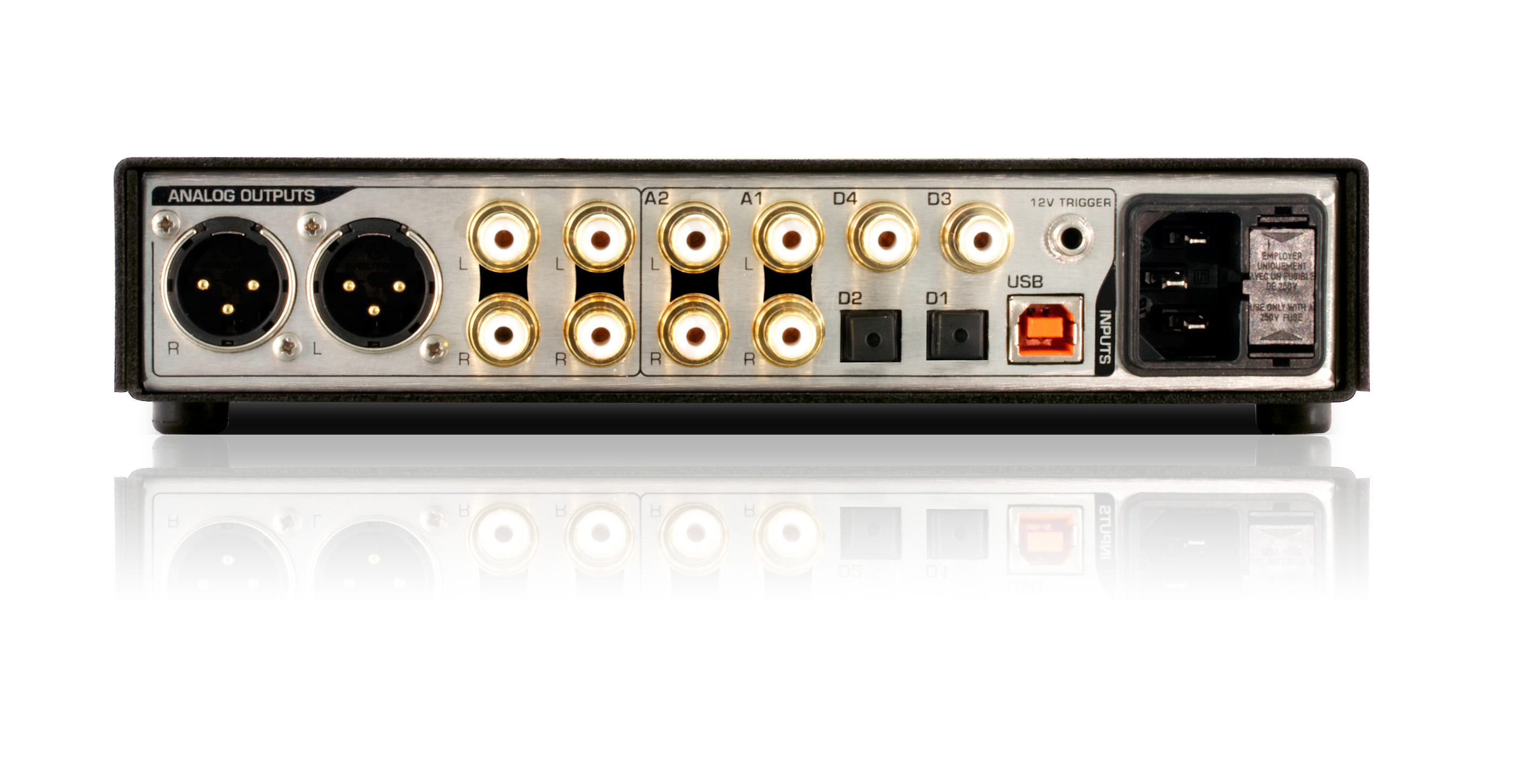What Does It Take To Turn The PC Into A Hi-Fi Audio Platform?
Most hi-fi audio is stored in digital form. With advancements in lossless compression, bit-perfect ripping/streaming, HD audio formats, multi-terabyte storage, and PC-friendly DACs, has the PC earned a place among high-end audio gear? At what price point?
Benchmark DAC2 HGC
Few devices are consistently praised in the audiophile community. The Benchmark DAC1 is one of the chosen few. You'll have a hard time finding someone with critical feedback about that device. And, although personal preferences and arguments over value are rife, it really is the reference for a high-end DAC and headphone amplifier combination.
In October of 2012, Benchmark Media released its DAC2 HGC to weighty expectations. At $2000, it's certainly not affordable (a DAC1 HDR, comparable in features, still goes for $1600). But to Benchmark's credit, aside from the headphone amplifier, which is the same HPA2 found on the DAC1, the DAC2 is an entirely new device. It leverages what is one of the world's highest-end DACs, the ESS ES9018, adding to it, among other things, custom jitter-reduction logic. It lives up to its Hybrid Gain Control name by implementing separate volume controls: digital for digital inputs; analog for analog inputs.
The Benchmark DAC2 HGC is the Cadillac of this round-up. It includes many features I'd imagine are generally useful to PC enthusiasts:
- Asynchronous USB input: up to 172.4/192 kHz at 24-bit PCM, plus native DSD64 support
- Four S/PDIF digital inputs (two coax, two optical)
- Two RCA stereo single-ended analog inputs
- Two RCA stereo single-ended analog outputs
- One XLR stereo balanced analog output
- Two front-panel stereo TRS (1/4") headphone jacks
- Input selection, word-length, and word-clock display on front panel (finally!)
- A remote control commanding a motor-driven actuator attached to the master volume control
- Polarity and dim/mute buttons, and a 12 V trigger (less commonly used)
Both front-panel headphone jacks can be active concurrently, without any signal degradation. The left headphone output jack mutes the back-panel analog output, while the right headphone output jack does not. This is a simple (but incredibly useful) feature that lets you mute (or not) your speakers by picking the appropriate jack for your headphones.
The DAC2 HGC operates as a USB Audio Class 1 device by default, which means that it doesn't require driver support for Windows and Mac compatibility. It can be manually switched to operate as a Class 2 device, necessitating a driver in Windows, which is included. The main reason to switch to UAC 2 is to play PCM files above 24-bit/96-kHz, DSD files, or if you need an ASIO driver for any reason. If none of those apply, there's no reason to change modes.
More affordable versions of the DAC2 HGC do exist. There's a DAC2 D without analog inputs and a DAC2 L with analog inputs, but without the headphone amplifiers. Both models are $200 cheaper at $1800. PC enthusiasts may look favorably at the DAC2 D, since it's unlikely that you'd need the analog inputs and that device supports concurrently multiple sets of both speakers and headphones, whereas the DAC2 L does not support headphones.
In case you're wondering, the DAC2 reflects exceptional build quality. That's something you'd no doubt expect at this price point, but it's still an important point to confirm. There's also a bundled remote that, while not terribly useful in a PC environment, is still a nice touch.
Get Tom's Hardware's best news and in-depth reviews, straight to your inbox.
Current page: Benchmark DAC2 HGC
Prev Page Four Devices Tested: From $2000 Down To $2 Next Page JDS Labs O2+ODAC Combo-
SuckRaven Bravo ! Awesome, and a very thorough review. Even though as you mention, audio gear is not usually the forté/emphasis of the reviews here, it's refreshing to have someone at least try to cut through the (more often-than-not) overpriced arena of bullshit that is the field of "high-end" audio. I applaud the review, and the effort. Keep up the good work. More please.Reply -
PudgyChicken Just wondering, why not test a Creative X-Fi Titanium HD or something like that alongside the ASUS Xonar? It would be interesting to see some of the differences between different PCIe sound cards in this matchup. However I understand that what you were really going for was showing the difference between price point and form factor at the same time, so perhaps not testing two PCIe cards makes sense.Reply -
kitsunestarwind The biggest thing I have found for the PC is no matter how good your DAC is , if your speakers and AMP are crap, then it will never sound better.People spend big money on DAC's and forget that you need a high Quality amp with very very low THD (total harmonic distortions) and a very good set of Full Range speakers with high sensitivity if you want good sound, instead of crappy (albeit expensive) computer speakers especially sets with a sub.Reply -
maestro0428 Wonderful article! I love listening to music and do so mostly at my PCs. I try to set up systems where audio is important in component selection. Although we all love drooling over expensive equipment, many times it is not all that necessary for an amazing experience. I'd love to see more! Including smaller, studio speakers as I believe that speakers/headphones are the most important part of the equation. Keep up the great work!Reply -
Someone Somewhere Agree totally with this. It always annoys me when people say they're spending over $100 on a sound card, especially when it turns out that they're using Optical out, and the whole thing is basically moot.I now have a nice source to link to.Reply -
1zacster The thing is you can't just pick up two sets of good headphones, try them on different DACs/AMPs and expect to hear major differences, it takes longer than 5 minutes for your ears to adjust to newer headphones and for the differences to actually show. This is like taking food from Left Bank and then bringing in a bunch of hobos and asking them tel tell the differences between the foods.Reply -
dogman-x I use an optical cable from my PC to a home theatre receiver. With this setup, stereo CD audio content is sent as raw PCM to the receiver, not compressed into DD or DTS. These days you can buy a very good quality home theatre receiver for less than $200. Audio quality is outstanding.Reply -
Memnarchon I would love to see ALC1150 in these tests too, since its widely used at most Z87 mobos.Reply

